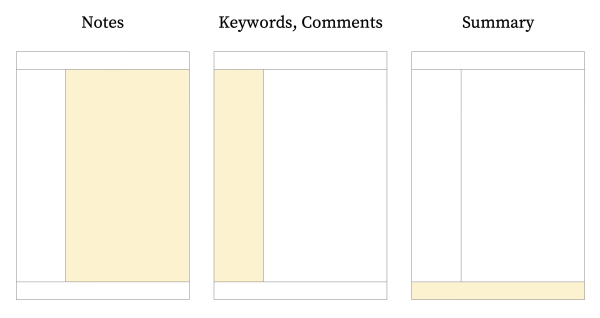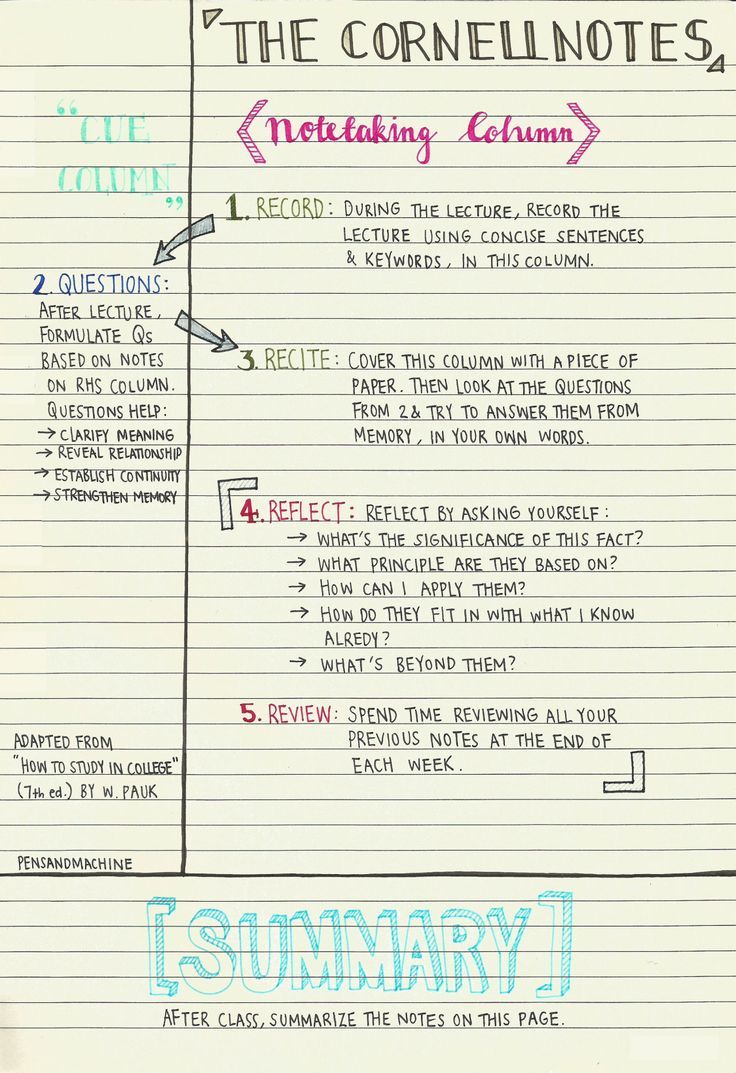Taking notes is an essential skill that consultants should master. In this article, I’ll introduce an effective note taking method. Originally, the Cornell Note Taking was a note-taking system that was used to take notes during lectures. The method is named after the Cornell University. This method has proven extremely effective in a learning context at a school or university setting. However, consultants can easily adapt this method to take notes to take notes during the client interactions.
Why take notes by hand?
Taking notes is important. Some prefer to take a structured approach and use an outline method to take notes. Others may prefer a visual way approach and draw mind maps. Some may even use no structure at all.
An interesting study found that students who reviewed their own notes outperformed students who reviewed notes given to them by their teacher. Several interesting studies have found that students who hand-wrote their notes learned more than those who typed them.
However, there is one note-taking technique that has proven itself far superior to others. Research has proven that this method is not only more efficient, but also makes it a lot easier to review & recall the notes. This technique is called The Cornell Note Taking technique. Therefore, the best notes are hand-made, self-made and Cornell Style.
The Cornell Method
The Cornell Method is a system for taking, organizing and reviewing notes. Professor Walter Pauk[1] of Cornell University devised this method in the 1950s. The strategy involves learners dividing their paper into two columns with a row across the bottom. Furthermore, it requires very little preparation which makes it ideal for note taking in a classroom or during a client meeting.
The strength of this method is the page layout. To make your own Cornell Notes, start by drawing a giant I on the page. At the top of the page you write down the name of the course, meeting or seminar together with the date and the subject. The left portion should be around 7 cm wide and is called the Cue / Questions / Keyword Column. This is where you’ll put your subheadings, all of which should be written as questions. In the larger column on the right, also called the note-taking column, write your notes in the usual manner.

Taking notes
You can use verbatim notes or informal outline notes for the note taking itself. Try to keep the sentences between 5 and 10 words in length. The Cornell Note Taking method discourages the use of long sentences. It is about short notes that you write down in the right-hand column using recognizable abbreviations and symbols. Prior to the note taking, draw up a list of abbreviations and expressions. This makes the note-taking process even easier. Write down important concepts, ideas, persons, formulas and graphs in the right-hand column.

Summary Section
Keep the bottom four centimetres of each page as a summary or conclusion. Summarizing the notes in the bottom row helps to consolidate your understanding. This is best done after the class or workshop. This also helps identify gaps where further study or analysis is required.
According to Robert Marzano[2], effective note taking involves the learner summarizing information being shared by deleting and substituting the information in order to create their own meaning. Get a great Cornell notes summary sheet here.
How to use this method?
- Record: During the lecture / meeting, use the note-taking column to take notes using telegraphic sentences.
- Questions: As soon after the session as possible, formulate questions based on the notes in the right-hand column. Writing questions helps to clarify meanings, reveal relationships, establish continuity, and strengthen memory. In addition, writing questions sets up a perfect stage for subsequent analysis later
- Recite: Cover the note-taking column with a sheet of paper. Then, looking at the questions or cue-words in the question and cue column only, say aloud, in your own words, the facts, or ideas indicated by the cue-words.
- Reflect: Reflect on the material by asking yourself questions, for example:
- What’s the significance of these facts?
- How can I apply them?
- What principle are they based on?
- How do they fit in the context that I already know?
- What’s beyond them?
- Review: Spend some time reviewing your previous notes. If you do, you’ll retain a great deal for current use, as well as, identify improvements or best practices for future engagements




